Hora Nirnaya Sangraham of Kavya Kanta Sri. Ganapathi Muni
Article by Sri. Ganapathi Muni
Introduction
While I was going through the different works of Parasara, I found certain contradictions and mistakes. I found in the beginning of these books the sloka SARVE TRIKONA NETAROU† meaning that all the Lords of the Konas will give good results and the Lords of three, six and eleven evil results. The Lords of one, five and nine that give good results are the odd bhavas, so also three and eleven as opposed to nine and five respectively. The even number six in the middle made me think and study how far it is correct. It may be a later interpolation or a mistake in writing.
The benefics which give good results are one five and nine and the evil bhavas, which are opposed to them must be seven, elevan and three respectively. Hence, as stated in these works, the malefics houses cannot be three six and elevan but should be three, seven and eleven. There are some complecations with regard to some even bhavas too. In order to verify my thesis I persued different printed works, manuscripts and palm leaves. In the BRIHAT PARASARA HORA SASTRAM published by Messers Kheladilal Sankata Prasad, Publishers and Printers, 61/92 Bulanala, Varanasi-1, the terms TRIMADAYA is found instead of TRISHADAYA in page no. 187. Trimadaya means three seven and eleven.
When I started writing Quintessence of Parasara, I came across ‘HORA NIRNAYA SANGRAHAM’ of Kavyakanta Ganagati Muni. The following sloka found in this work reinforced my thesis.
धीस्तपोजन्मकोणानि प्रतीपंतु तदस्तभम् ।
त्रिकं षष्ठाष्टमांत्यानि शेषो भोग इहोच्यते॥ ० – १
INTELLIGENCE, PENANCE, BIRTH (bhavas five, nine, one) are called Konas and the seventh bhavas of these are pratipas or negatives. Six, eight and twelve are Trikas and the rest are BHOGAS.
In the Telugu Version of this work, some mistakes, not correctly represnting the original, and in some places, what are contrary to the original are found.
Ganapathi Muni has expounded Parasara’s doctrine in a simple manner for the scholars who lived in Gokarna Kshetram. It is but difficult for the beginners to understand this work. Hence, in order to make it easier for the students the ‘HORA NIRNAYA SANGRAHA’ of the Great Ganapati Muni, I have understaken the ambitious venture of writing commentary to it. It is also necessary to find out how far Ganapathi Muni agrees with Parasara and also the differences if any. This work is joined as a second part to PARASARA’s VEDIC ASTROLOGY. It is for the readers to judge how far I am successful in my venture.
† सर्वे त्रिकोण भेतारो प्रह्यः शुभफलप्रदाः।
पतय स्विषडायानां यदि पापफलप्रदाः ॥ ० – २
होरा निर्णय संग्रहः
॥ प्रथमः सामान्यसंज्ञाध्यायः ॥
horā nirṇaya saṁgrahaḥ
|| prathamaḥ sāmānyasaṁjñādhyāyaḥ ||
SIMPLE FUNDAMENTALS
कल्याणं कश्चिदस्माकं करोतु ज्योतिषां पतिः ।
यस्य विष्णुवधूसौधकवाटोद्धाटनाः कराः ॥ १ – १
kalyāṇaṁ kaścidasmākaṁ karotu jyotiṣāṁ patiḥ |
yasya viṣṇuvadhūsaudhakavāṭoddhāṭanāḥ karāḥ || 1 – 1
May the Lord of luminaries whose rays open the gates of the abode of Vishnu’s spouse bless us with prosperity.
The author of this great work, Sri Ganapati Muni prays the king of planets, Sun (Surya), in this verse, to bless the readers with prosperity.
मतमालोच्य शाक्तस्य महर्षेर्दीर्घदर्शिनः
दैवज्ञानां मुदे कुर्मो होरानिर्णयसंग्रहात् ॥ १ – २
matamālocya śāktasya maharṣedīrghadarśinaḥ |
daivajñānāṁ mude kurmo horānirṇayasaṁgrahāt || 1 – 2
Following the theory of the Sage Parasara, the son of Sakthi, I present this Hora Nirnaya Sangraham for the delight of astrologers.
The author says that he is presenting here the substance of Hora Sastra as indicated by Parasara, for the delight of astrologers.
From various works and contributions of astrology, one can come to the conclusion, that the Hora Sastram of astrology was enunciated by the Great Sage Parasara. Hence, we have reasons to believe after going through Sri Ganapathi Muni’s contribution that the whole thinking has revolved round Parasara’s contribution and none else.
पूर्णा लोकश्च संयोगो ग्राह्यौ संबंधशब्दतः
संयोगमात्रे संयोगयोगसंसर्गसंगमाः
ग्राह्या पादादिदृष्टिश्च दृष्टिवाचकशब्दतः
शुभास्चातिशुभा देवा दैत्याः पापातिपापिनः ॥ १ – ३
pūrṇā lokaśca saṁyogo grāhyau saṁbaṁdhaśabdataḥ |
saṁyogamātre saṁyogayogasaṁsargasaṁgamāḥ ||
grāhyā pādādidṛṣṭiśca dṛṣṭivācakaśabdataḥ |
śubhāścātiśubhā devā daityāḥ pāpātipāpinaḥ || 1 – 3
(I) Wherever the word संबंध (SAMBANDHA) is used in this text it should be understood as the Full Aspect (POORNA DRISTI) of the planets concerned or their conjunction.
(II) Wherever the word संयोग (SAMYOGA) or योग (YOGA), संसर्ग (SAM SARGA), संगम (SANGAMA) are used, it should be understood as conjuction only.
(III) Wherever the word दृष्टि DRISTI (aspect) is used it should be understood as पाद ‘PASADRISTI’ ¼ or ARDHA DRISTI ½ or THRIPADA DRISTI ¾ or POORNA DRISTI (full aspect).
(IV) Whenever the word DEVA is used it should be understood as Subha or Ati Subha (benefic or major benefic).
(V) Whenever the word DAITYA is used it should be understood as Papa or Ati Papa (malefic or Major malefic).
Now for the benefit of readers an interpretation for the above is given below. The author has given here the meaning of a few words used in this work. संबन्ध Sambandha = The conjuction or full aspect of planets. It is an association or relation. संयोग (Samyoga) or योग (Yoga) or संसर्ग (Samsarga) or संगम (samgama) = conjunction of planets only. दृष्टि (Dristi) any one of the aspects of the planets (Generally 180 degrees – full aspect, 90 degrees – ½ aspect, 45 degrees ¼ aspect, 135 degrees – ¾ aspect. These four are said to be evil aspects. The rest 30, 60, 72, 120, 144, 150 are benefic aspects.)
देव (Deva) = Subha (Benefic) and Ati Subha (major benefic)
दैत्य (Daitya) = Papi (malefic) and Ati Papi (major malefic).
These terms should be carefully understood as interpreted by Ganapathi Muni.
Ganapathi Muni in the following verse gives the fundamental rules of Parasara.
धीस्तपोजन्मकोणानि प्रतीपंतु तदस्तभम्
त्रिकं षष्ठाष्टमांत्यानि शेषो भोग इहोच्यते ॥ १ – ४
dhīstapojanmakoṇāni pratīpatu tadastabham |
trikaṁ ṣaṣṭhāṣṭamātyāni śeṣo bhoga ihocyate || 1 – 4
Of the twelve bhavas of a horoscope, the ascendant, the fifth and the ninth bhavas are named KONAS (trines). The opposite bhavas of these (Seventh – Eleventh – Third) are named PRATIPAS (meaning opposite of trines). Sixth, Eighth and twelfth bhavas are names Trikas and the remaining bhavas two, four and ten are named Bhoga (enjoyment of profit gain etc.)
The author explains how Parasara has divided the twelve bhavas into four groups. There are six odd and six even bhavas.
Bhavas one, five and nine are Konas. The opposites of these bhavas Seven, Eleven and Three respectively are Pratipas. Sixth, Eighth and Twelfth Bhavas are named Trikas. The rest, Bhavas Two, Four and Ten are BHOGAS. Of the above said four groups, some are again renamed thus,
दक्षिणधनषष्टाज्ञाः सव्याः सुखमृतिव्ययाः
रमाऽऽख्यौ मातृदशमौ विष्ण्वाख्यौ भाग्यपंचमौ ॥ १ – ५
dakṣiṇadhanaṣaṣṭājñāḥ savyāḥ sukhamṛtivyayāḥ |
ramā”khyau mātṛdaśamau viṣṇvākhyau bhāgyapaṁcamau || 1 – 5
Four and ten bhavas are named LAKSHMI STHANAMS, five and nine VISHNU STHANAMS, two, six and ten are DAKSHNAMS; and four, eight and twelve are SAVYAMS.
Here a deep study reveals that Dakshinas and Savyaas are mutually opposite bhavas (ten to four; six to twelve; two to eight). This is just like Partipas opposing trines (eleven to five; seven to one; three to nine).
In this way the twelve signs are divided into four main groups. The two groups Konas (Trines) and Pratipas are odd and mutually opposite bhavas.
Similarly, the two groups Dakshinams and Savyas are even and mutually opposite bhavas.
Among Konas (Trines), the fifth and ninth are named Vishnu Sthanams. Among bhogas (gains), the fourth and tenth are named Lakshmi Sthanams.
पंचमस्य च राज्यस्य द्वितीयः शत्रुरात्मतः
व्ययश्चतुर्थतपसोर्द्वयं लग्नस्य सस्मरम् ॥ १ – ६
paṁcamasya ca rājyasya dvitīyaḥ śatrurātmataḥ |
vyayaścaturthatapasordvayaṁ lagnasya sasmaram || 1 – 6
To the fifth bhava and the tenth bhava, their second bhavas are inimical. To the ninth bhava and the fourth bhava, their twelfth bhavas are inimical. For the Ascendant, both its second and twelfth are inimical. The seventh to each of them is inimical.
To be more clear, nearest Trikas to Vishnu Sthanams and the nearest Pratipas to Lakshni Sthanams are inimical to them.
स्वतंत्रा अयुजो भावाः परतंत्रा युजो मताः
कोणभोगाः शुभाः प्रोक्ताः शेषाः पापाः स्वभावतः ॥ १ – ७
svataṁtrā ayujo bhāvāḥ parataṁtrā yujo matāḥ |
koṇabhogāḥ śubhāḥ proktāḥ śeṣāḥ pāpāḥ svabhāvataḥ || 1 – 7
All the odd bhavas are independent, all the even bhavas, are dependent. Konas and the Bhogas are Benefics – Trikas and Pratipas are malefics. (Ref to part 1 P 49)
निसर्गपदसद्भावे पापाः सूर्यसुतादयः
शुभा गुर्वादयश्चेति ज्ञेयं सामान्यशास्त्रतः ॥ १ – ८
nisargapadasadbhāve pāpāḥ sūryasutādayaḥ |
śubhā gurvādayaśceti jñeyaṁ sāmānyaśāstrataḥ || 1 – 8
By nature Sani etc., are maelfics, Guru etc., are benefics. This can be known from other works. (see P 8 of the first part)
फलान्यति शुभादीनां दशास्वेव विनिर्दिशेत्
कालानपेक्षं वक्तव्यं राजयोगादि जातके ॥ १ – ९
phalānyati śubhādīnāṁ daśāsveva vinirdiśet |
kālānapekṣaṁ vaktavyaṁ rājayogādi jātake || 1 – 9
The results of a horoscope can be predicted in the dasas of ati shubha grahas and so on. But Raja Yoga should be predicted irrespective of time. (see Page 64 of Part 1)
Regarding Ati Subha etc. is explained in the following chapters.
The term Ati Subha will be defined in the next chapter.
Ganapathi Muni declares that Rajayoga (Dhanayoga etc.) should be predicted to a person without considering the dasa or bhukti period. Hence, Rajayoga may hold good for the whole span of life.
श्रीपतेः षड्विधंवीर्यं संज्ञारिष्टे वराहतः
फलानि विन्दन्नेतस्माद्दैवज्ञो विजयो भवेत् ॥ १ – १०
śrīpateḥ ṣaḍvidhaṁvīryaṁ saṁjñāriṣṭe varāhataḥ |
phalāni vindannetasmāddaivajño vijayo bhavet ||
After learning the SHADBALAS of planets from Sripathi’s work, and the fundamentals and Balaristha from Varahamihira’s works, if one attempts to predict according to this work, that person will never face any defeat.
From this it is very clear that Ganapathi Muni approves of Sripathi’s Sadbala and Varaha’s fundamentals and Balaristas only.
SUMMARY
The twelve houses have been divided into two main groups odd and even signs (bhavas).
Again among the odd bhavas one, five and nine are called KONAS (Benefics). Three – Seven – Eleven are called Pratipas (the opposite of Konas and hence malefics).
Similarly, the even bhavas are also divided as :
Six – Eight – Twelve the Trikas (asubhas or malefics)
Two – four – ten bhogas (Subhas or benefics)
Again Trikas and Bhogas are rearranged thus : two, six and ten are Dakshinas (the succeeding bhavas to Konas), Four, eighth and twelfth are Savyas (the preceeding bhavas to Konas) of the even bhavas, four and ten are named LAKSHMI STHANAMS; of the odd bhavas, five and nine VISHNU STHANAMS.
For the Lakshmi Sthanas, their nearest Pratipas are inimical to them. For the Vishnu Sthanas, their nearest Trikas are inimical to them. For the Lagna (ascendant) both the preceeding and the succeeding bhavas are inimical to it.
Thus to fourth bhava third bhava is inimical.
to tenth bhava eleventh bhava is inimical
to fifth bhava Sixth bhava is inimical
to ninth bhava eighth bhava is inimical
to Lagna second and twelfth bhavas are inimical
Generally, for any bhava, its opposite bhava is inimical to it.
The odd bhavas are independent while the even bhavas are dependent.
Ganapathi Muni approves the SHATBALAS of Sripati and the fundamentals and BALARISHTAS of Varahamihira’s works.
GLOSSARY :
Sambandha – conjunction of planets or full aspect of planets.
Samyooga, Yoga, samsarga and sangama means only conjunction of planets.
Drishti – any kind of aspect of the planets.
Deva – Benefic or Major Benefic
Daitya – Malefic or Major Malefic.
विशिष्ट संज्ञाध्यायः
viśiṣṭa saṁjñādhyāyaḥ
FUNDAMENTALS – PARTICULAR
कोणभोगपतिः कोणत्रिकेद्भोगप्रतीपपः
त्रिकप्रतीपपो भौममुख्येष्वति शुभादयः ॥ २ – १
koṇabhogapatiḥ koṇatrikedbhogapratīpapaḥ |
trikapratīpapo bhaumamukhyeṣvati śubhādayaḥ || 2 – 1
The Lord of a Kona and a Bhoga; the Lord of a Kona and a Trika; the Lord of a Bhoga and a Pratipa; and the Lord of a Trika and a Pratheepa are said to be Major Benefics, etc. for the planets starting from Mars.
The Tara grahas, Mars, Mercury, Juptier, Venus and Saturn the Lords are of two bhavas each. One is odd while the other even. No planet can get the Lordship of two odd bhavas or two even bhavas. They are said to be Ati Subha, Subha, Papa and Ati Papa as explained below. Ati Subh (Major benefic) is the Lord of a Kona and Bhoga. Subha (benefic) is the Lord of a Kona and Trika. Papa (malefic) is the Lord of a Bhoga and Pratipa. Ati papa (Major malefic) is the Lord of a Trika and Pratipa.
अपि स्वभावतः पापं परतंत्रतया त्रिकम् ।
कोणेन बलिना श्लिष्टं भवति क्षीणविक्रमम् ॥ २ – २
api svabhāvataḥ pāpaṁ parataṁtratayā trikam |
koṇena balinā śliṣṭaṁ bhavati kṣīṇavikramam || 2 – 2
Even though the Lord of dependent Trikas are malefic, by being the Lord of a Kona also, they can not be Malefic.
As stated in the previous chapter (sloka 8), a planet gets the Lordship of an odd sign and an even sign. The odd sign Lordship being stronger, the Kona being an independent benefic (Subha), the malefic results of the dependent Trika is over-powered by the benefic results of a Kona. Hence, the planet which is both a Kona and Trika Lord becomes Subha.
परतंत्रतया भोगः स्वभावेन शुभोऽपिसन् ।
पापप्रतीपसंश्लेषाद्भवति स्वगुणाच्च्युतः ॥ २ – ३
parataṁtratayā bhogaḥ svabhāvena śubho’pisan |
pāpapratīpasaṁśleṣādbhavati svaguṇāccyutaḥ || 2 – 3
Even though the Lord of Bhogas are benefics, be getting the Lord of Praptipas the cannot do good.
Just as the malefic Trika Lord becomes a benefic by being the Lord of a Kona too, the benefic dependent Bhoga Lord by its Second Lordship as an independent malefic pratipa, becomes a malefic.
तनोः सामान्यतो मित्रमपि शत्रुर्विशेषतः
द्वितीयोऽतस्तयोरीशो नाम्नाग्र् योऽनन्तरः फले ॥ २ – ४
tanoḥ sāmānyato mitramapi śatrurviśeṣataḥ |
dvitīyo’tastayorīśo nāmnāgrayo’nantaraḥ phale || 2 – 4
Generally, even though the second bhava and its Lord are friendly to the Ascendant, they are said to be more inimical to it. Name sake they are great, but in giving results they are the least. (This will be explained in the next chapter)
कोणानि स्वसमीपस्थत्रिकयुंजिशुभानि चेत् ।
नान्वयाद्भावशक्तीनां द्वेषिस्वव्यययोः क्षयात् ॥ २ – ५
koṇāni svasamīpasthatrikayuṁjiśubhāni cet |
nānvayādbhāvaśaktīnāṁ dveṣisvavyayayoḥ kṣayāt || 2 – 5
Though the Lords of Konas are benevolent, if they join the Lords of the nearest Trikas, they can not do good. So, if they are in the nearest Trikas they can not do good as they loose power (see slokas 7 chap1)
Here the relation between the Lords of Konas (one-five-nine) and their nearest Trikas is explained. The Konas are one, five and nine bhavas; Trikas Six, Eight, Twelve bhavas.
For the first Kona (ascendant) the twelfth is the nearest. So if the Lord of ascendant is in twelve or if he joins the Lord of twelve he can not do good. Similaraly, the relationship between the five and six and that of nine and eight are not beneficial.
Till now the author has dealt with the five Tara grahas, Mars – Mercury – Jupiter – Venus and Sturn, In the following verses he referes to the Mandala Grahas – Sun and Moon.
भार्स्वतो दक्षिणाः सव्याः शीतांशोः सव्यदक्षिणाः ।
शुभाशुभाद्वयोः कोणप्रतीपेतिशुभाशुभे ॥ २ – ६
bhāsvaṁto dakṣiṇāḥ savyāḥ śītāśoḥ savyadakṣiṇāḥ |
śubhāśubhādvayoḥ koṇapratīpetiśubhāśubhe || 2 – 6
Sun as Lord of Dakshinas (two – six – ten bhavas) is benefic but as Lord of Savyas (four – eight – twelve bhavas) malefic. Moon as Lord of Dakshinas (two – six – ten) malefic, but as Lord of Savyas (four – eight – twelve) benefic. As Lord of Konas both are Benefics and as Lords of Pratipas both are malefics.
Sun and Moon are getting Lordship of a Single sign. As Lords of Konas and Pratipas they give the same results, as the Tara grahas. As Lords of even signs the Mandala grahas, give different results. The beneficial Lordship for Sun is malecious to Moon ans vice-versa. The reason for this is explained in the next slokas.
षष्ठनाथः सहस्राशुश्चंद्रो रंध्रान्त्यनायकः ।
लग्ननाथ शुहृत्वेन नपापावित्यतः शुभौ ॥ २ – ७
ṣaṣṭhanāthaḥ sahasrāṁśuścaṁdro raṁdhrāntyanāyakaḥ |
lagnanātha śuhṛtvena napāpāvityataḥ śubhau || 2 – 7
Sun as Lord of sixth bhava, Moon as Lord of eighth bhava or twelfth bhava are not malecious. Moreover, they are Benefics as they are friendly to the Lord of Ascendant.
Sun is the Lord six for Meena Ascendant. Moon is the Lord eight for Dhanus Ascendant and Lord of Twelve for Simha Ascendant. So this rule is applicable to those ascendants. As stated in sloka eight of chapter one, the Lords of the Trikas (six- eight – twelve) are malefics, But Sun and Moon for the said Ascendants are not evil as they are friendly to the Lords of these Ascendants. This rule will be clear in the next chapter.
लग्ननाथासुहृत्वेन दौर्बल्यादपि तद्दिशि ।
न शुभवित्यतः पापाविमौ वाहनकर्मपौ ॥ २ – ८
lagnanāthāsuhṛtvena daurbalyādapi taddiśi |
na śubhāvityataḥ pāpāvimau vāhanakarmapau || 2 – 8
Sun as Lord of fourth bhava and Moon as Lord of tenth bhava are not benefics, but on the other hand, they are malecious as they are inimical to the Lord of Ascendant.
Sun is the Lord of four for Vrishabha lagna (Ascendant) and Moon is the Lord of ten for Tula Ascendant. So, this is applicable to these two ascendants only. A deep study of the above conditions reveal the following facts:
For any ascendant, Lord of one (Ascendant), five and nine are benefics. The Lords of Three – Seven and Eleven are malefics.
If odd signs (Mesha – Mithuna – Simha – Tula – Dhanus – Kumbha) are Ascendants, the Lords of Dakshinas (the succeeding bhavas of Konas: two – six – ten) are malefics. The Lords of Savyas (the preceeding bhavas: four – eight – twelve) are benefics.
If even signs (Rishabha – Karkata – Kanya – Vrischika – Makara – Meena) are Ascendants, then the Lords of Dakshinas (two – six – ten) are benefics and the Lords of Savyas (four – eight – twelve) are malefics.
Thus the benefics and malefics of any ascendant may be determined. In the next verse, the conditions for the chaya grahas Rahu and Ketu are explained.
फले तमोग्रहौ स्यातां संबद्धग्रहसंन्निभौ ।
तदभावे समारूढराशिनायक संनिभौ ॥ २ – ९
phale tamograhau syātāṁ saṁbaddhagrahasaṁnnibhau |
tadabhāve samārūḍharāśināyaka saṁnibhau ||
Rahu and Ketu will give the results similar to that of the planets with whom they combine. If this does not occur, they give the results similar to that of the Lords of the bhavas they are positioned in (Refer to Part 1 page 3)
SUMMARY :
- Dual Lordship of planets: (for Tara grahas only)
A) If a planet is a Lord of both a Kona (one, five or nine) and bhoga (two – four or ten) it becomes a Major Benefic.
B) Lordship of a Kona (one – five or nine) and Trika (six – eight or twelve) – Benefic.
C) Lordship of a Bhoga and Pratipa (tthree – seven – eleven) Malefic.
D) Lordship pf a Trika and Pratipa – Major Malefic.
2. Sun and Moon :
A) Sun being the Lord of succeeding bhavas to Konas is a benefic.
B) Sun as Lord of preceeding bhavas to Konas is malefic.
C) Moon as the Lord of succeeding bhavas to Konas is Malefic.
D) Moon as the Lord of preceeding bhavas to Konas is benefic.
3. Rahu and Ketu :
A) If conjunct with any planet, give the results of that planet either malefic or benefic.
B) If positioned alone, they give the results of the Lord of that Bhava wich may be good or bad.
उदाहरणध्यायः
udāharaṇadhyāyaḥ
Planetary relationship to Ascendants.
मेषस्य सूर्योजीवारचंद्राः सौरिसितौ बुधः
शनिज्ञौ भार्गवो भानुश्चन्द्रारगुरुवो वृषे ॥ ३ – १ ॥
युग्मस्य सौम्यः शुक्रार्की चन्द्रेज्यौ रविभूसुतौ
भौमेन्दू जीवभास्वन्तौ शुक्रो ज्ञार्की च कर्किणि ॥ ३ – २ ॥
भौमार्कौ गुरुशीतांशू शुक्रसौम्यौ शनिर्हरौ
स्त्रियांसितबुधौ मन्दो गुर्वर्काविन्दुभूसुतौ ॥ ३ – ३ ॥
मन्दोज्ञशुक्रौ चन्द्रारौ सूर्यजीवौ च तौलिनी
चन्द्रजीवौ रविकुजौ मन्दः शुक्रबुधावलौ ॥ ३ – ४ ॥
धनुष्यर्कगुरू भौमचन्द्रौ बुधशनी सितः
शुक्रमन्दौ बुधो भौमरवी चन्द्रगुरू मृगे ॥ ३ – ५ ॥
घटे शुक्रो बुधशनी भौमेन्दुगुरवो रविः
कुजेन्दुगुरवः सूर्यः सौम्यः शनिसितौ झषे ॥ ३ – ६ ॥
द्वादशानामतिशुभाः क्रमादेवं शुभा अपि
पापिनश्चातिपापाश्च लग्नानां समुदाहृताः ॥ ३ – ७ ॥
meṣasya sūryojīvāracaṁdrāḥ saurisitau budhaḥ |
śanijñau bhārgavo bhānuścarndrāraguruvo vṛṣe || 3 – 1
yugmasya saumyaḥ śukrārkī candrejyau ravibhūsutau |
bhaumendū jīvabhāsvantau śukro jñārkī ca karkiṇi || 3 – 2
bhaumārkau guruśītāṁśū śukrasaumyau śanirharau |
striyāṁsitabudhau mando gurvarkāvindubhūsutau || 3 – 3
mandojñaśukrau candrārau sūryajīvau ca taulinī |
candrajīvau ravikujau mandaḥ śukrabudhāvalau || 3 – 4
dhanuṣyarkagurū bhaumacandrau budhaśanī sitaḥ |
śukramandau budho bhaumaravī candragurū mṛge || 3 – 5
ghaṭe śukro budhaśanī bhaumenduguravo raviḥ |
kujenduguravaḥ sūryaḥ saumyaḥ śanisitau jhaṣe || 3 – 6
dvādaśānāmatiśubhāḥ kramādevaṁ śubhā api |
pāpinaścātipāpāśca lagnānāṁ samudāhṛtāḥ || 3 – 7
| Ascendant | Major Benefic
Ati Subha |
Benefic
Subha |
Malefic
Papa |
Major Malefic
Ati Papa |
| ARI | SUN | Jupiter – Moon – Mars | Sat – Venus | Mercury |
| TAR | Saturn – Mercury | Venus | Sun | Moon – Mars – Jupiter |
| GEM | Mercury | Venus – Saturn | Moon – Jupiter | Sun – Mars |
| CAN | Mars – Moon | Jupiter – Sun | Venus | Mercury – Saturn |
| LEO | Mars – Sun | Jupiter – Moon | Venus – Mercury | Saturn |
| VIR | Venus – Mercury | Saturn | Jupiter – Sun | Moon – Mars |
| LIB | Saturn | Mercury – Venus | Moon – Mars | Sun – Jupiter |
| SCO | Moon – Jupiter | Sun – Mars | Saturn | Venus – Mercury |
| SAG | Sun – Jupiter | Mars – moon | Mercury – Saturn | Venus |
| CAP | Venus – Saturn | Mercury | Mars – Sun | Moon – Jupiter |
| AQU | Venus | Mercury – Saturn | Mars – Moon – Jup | Sun |
| PIE | Mars – Moon – Jup | Sun | Mercury |
Saturn – Venus |
For the twelve Ascendants the major benefic, benefic, malefic and major malefic are given in the above table. Rahu and Ketu are not mentioned in this table since they give results of the planets with which they combine or that of the Lord of the bhava in which they are placed.
(Ref to page 56-57 of Part 1)
यथा पूर्वं बलं ज्ञेयं प्रतियोगं सुपर्वणाम् ।
यथोत्तरं च दैत्यानां तारतम्यविनिर्णये॥ ॥ ३ – ८ ॥
yathāpurvaṁ balaṁ jñyaṁ pratiyogaṁ suparvaṇām |
yathottaraṁ ca daityānāṁ tāratamyavinirṇaye || 3 – 8
In the case of conjunction of planets, the strength of a planet has that of the other planet, which has more strength as mentioned in the above gradation. This will be explained in the ensuing chapter.
शनिशुक्रबुधर्क्षाणा मितरे दैत्यसंज्ञकाः ।
त्रयस्ते चेतरर्क्षाणां दैत्यभिन्ना दिवौकसः ॥ ३ – ९ ॥
śaniśukrabudharkṣāṇā mitare daityasaṁjñakāḥ |
trayaste cetararkṣāṇāṁ daityabhinnā divaukasaḥ || 3 – 9
For the bhavas owned by Saturn, Venus and Mercury, the bhavas owned by other planets becoe Daityas (malefics). These three bhavas owned by (Saturn – Venus – and Mercury) are the Daityas (malefics) for the other bhavas.
Simplifying parasas version, Ganapathi Muni has divided the seven planets into two groups.
- Saturn, Mercury and Venus
- Sun, Moon, Mars and Jupiter
Each group is malefic to the other group.
संबंधस्थितिविचारणा
saṁbaṁdhasthitivicāraṇā
Relationship and position of planets:
As stateed in the earlier chapters, SAMBANDHA or relationship implies conjunction of planets or mutual full aspect or the full aspect of one planet on another. STHITI refers to the position of a planet in a bhava.
त्रयाणां पुनराढ्यानां द्वयो रतिशुभादिषु ।
संयोगेष्वर्वरो योगी श्रेष्ठः स्वावरसंज्ञकः ॥ ४ – १॥
trayāṇāṁ punarāḍhyānāṁ dvayo ratiśubhādiṣu |
saṁyogeṣvarvaro yogī śreṣṭhaḥ svāvarasaṁjñakaḥ || 4 – 1 ||
Of the three planets, Major Benefic, Benefic and Malefic, if any two combine, the inferior planet gives good results but the superior can not be as effective as it should be.
If a Major Benefic (Lakshmi Sthanathipathi without Konadhipatyam) combines with a malefic (Lakshmi Sthanathipathi with pratipadhi patyam) only the malefic gives good results, but the results of the major benefic get reduced. If the malefic (Lakshmi Sthanathipathi with Prateepadhipatyam) combines with a benefic (konadhipatyam with trikonadhipatyam) it gives good results reducing the results of the benefic.
श्रीकेशवेशयोर्योगे देवयोर्योगिनावुभौ ।
दैत्यरंध्रात्यपत्योश्च योगे द्वावपि योगिनौ ॥ ४ – २॥
śrīkeśaveśayoryoge devayoryogināvubhau |
daityaraṁdhrāṁtyapatyośca yoge dvāvapi yoginau || 4 – 2 ||
If a Lord of Lakshmi Sthana (Lord of 4 or 10) not having the Lordship of a Pratheepa (3, 7, 11) joined the Lord of a VISHNU STHANA (five or nine) both will give superb results. Similarly, if the Lords of eight and twelve having Pratipadhipatyam (the DAITYAS three, seven, eleven) conjoin both the planets give superb results.
A deep study reveals that the first part of the 1st line of the sloka is applicable to odd signs LAGNAS, and the second part to that of the even signed. In the case of odd signs, if the fourth house Lord combines with the Lord of fifth or ninth both the Lords four and five give superb results. In the case of even signed lagnas the Lords of ten should conjoin with fifth or ninth Lords.
The term “DEVAYOH” or divine in the first line indicates that the Lakshmi Sthanas four and ten should not be a DAITYA (the Lord of three, seven or eleven). Similarly, in the second line Daitya indicates that the eight and twelfth Lord should not be a Kona Lord.
The first condition is applicable to the odd signed lagnas only, and the second to the even signed lagnas.
सर्वेभावाधिपतयः सवर्णगृहसंस्थितेः ।
सवर्णस्य च संयोगात्प्रभविष्यति योगिनः ॥ ४ – ३॥
sarvebhāvādhipatayaḥ savarṇagṛhasaṁsthiteḥ |
savarṇasya ca saṁyogātprabhaviṣyati yoginaḥ || 4 – 3 ||
If Lord of all the bhavas are placed in the houses of the planets of their groups, or conjoin with the Lords of the same group, they give good results.
For example, if any two of the planets, Saturn, Venus and Mercury conjoin or are placed in their bhavas, they give good results. Similarly, the other planets Sun, Moon, Mars and Jupiter should conjoin with Planets within the group or be positioned in any of their bhavas.
सर्वेष्वेतेषुयोगेषु पूर्णालोके परस्परम् ।
बलावरोभवेद्योगी बलाधिकमदूषयन् ॥ ४ – ४॥
sarveṣveteṣuyogeṣu pūrṇāloke parasparam |
balāvarobhavedyogī balādhikamadūṣayan || 4 – 4 ||
In all these above said yogas of three (Major Benefic, Benefic and malefic) in the case of their mutual full aspects, the weaker planet gives good results but the strength of the stronger planet does not get reduced by the aspect of the weaker.
सर्वेष्वेतेषु योगेषु ज्यायसा पूर्णमीक्षितः ।
तमपश्यन्कनीयाश्च योगीति समुदाहृतः ॥ ४ – ५॥
sarveṣveteṣu yogeṣu jyāyasā pūrṇamīkṣitaḥ |
tamapaśyankanīyāśca yogīti samudāhṛtaḥ || 4 – 5 ||
In all these yogas, if the stronger planet fully aspects the weaker, though the weaker does not aspect the stronger, the weaker planet gives good results.
देवश्री हरिपौ विष्णुदेवश्रीगौ तु योगिनौ ।
दैत्यः पद्मालयानाथः शुभो दामोदरस्थितः ॥ ४ – ६॥
devaśrī haripau viṣṇudevaśrīgau tu yoginau |
daityaḥ padmālayānāthaḥ śubho dāmodarasthitaḥ || 4 – 6 ||
If LAKSHMI STHANADIPATHI with KONADHIPATYAMS (Major Benefic) stays in a VISHNU STANAM and Vice-versa they both give good results. If a Lakshmi Sthanadhipathi with a pratipadhipatyam (Papi) is positioned in a Vishnu Sthanam, it becomes a Benefic.
From the second line we can infer that the Vishnusthnathipathi positioned in the pratipasthanam gets weakened.
अतिपापातिशुभयोर्योगे पूर्वः शुभो भवेत् ।
अपरो भवितापापः संगजाहि गुणागुणाः ॥ ४ – ७॥
atipāpātiśubhayoryoge pūrvaḥ śubho bhavet |
aparo bhavitāpāpaḥ saṁgajāhi guṇāguṇāḥ || 4 – 7 ||
When a Major Malefic conjoins a Major Benefic, the formaer becomes a Benefic but the latter (the Major Benefic) becomes a Malefic. Their qualities interchange by conjunction.
युक्तः शुभे नातिपापः पापेन च शुभो भवेत् ।
नपातयेच्छुभं नीचैरुच्चैरारोहयेत्परम् ॥ ४ – ८॥
yuktaḥ śubhe nātipāpaḥ pāpena ca śubho bhavet |
napātayecchubhaṁ nīcairuccairārohayetparam || 4 – 8 ||
If a Major Malefic joins a Benefic or a Malefic, theMajor Malefic gives good results. Here, the strength of the Benefic does not get reduced but enhanced.
In this combination, two Lords or Trikas – one having the Lordship of a Kona and the other of a Prateepa – are considered.
Major Malefic – Lord of Trika (six – eight – twelve) and also a Prateepa (three, seven – eleven)
Benefic – Lord of a Trika (six – eight – twelve) and also a Kona (one – five – nine)
Major Malefic – gives goos results
Benefic – Becomes stronger in giving good results
For Mesha Lagna, if Jupiter (Benefic being Lord of nine and twelve) and Mercury (Major Malefic Lord of three and six) combine, Jupiter gives superb yoga.
त्र्यादीनां भिन्नजातीनां योगे ज्यांयान्पतत्यधः ।
कनीयांच्छुभसंज्ञः स्याद्योगिनो मध्यवर्तिनः ॥ ४ – ९॥
tryādīnāṁ bhinnajātīnāṁ yoge jyāṁyānpatatyadhaḥ |
kanīyāṁcchubhasaṁjñaḥ syādyogino madhyavartinaḥ || 4 – 9 ||
When any three planets (of the four categories) conjoin, the superior loses its strength, the inferior becomes a subha and the middle one will give superb yoga.
Of the four categories Major Benefic, Benefic, Malefic and Major Malefic following combinations are possible:
- Major Benefic, Beneif, Malefic
- Major Benefic, Malefic, Major Malefic
- Major Benefic, Benefic, Major Malefic
- Benefic, Malefic, Major Malefic
In the first three cases Major Benefic loses its strength. Similarly, the Benefic in the fourth case loses its strength.
- Malefic or Major Malefic becomes Benefic.
- The middle one gives superb yoga.
मारकविचारणा
mārakavicāraṇā
Study of Logevity
स्वयं लग्नारिपयः तथा लग्नारिसंस्थिताः ।
लग्नारिपयुता दैत्या मारकाः स्युर्यथोत्तरम् ॥ ५ – १॥
svayaṁ lagnāripayaḥ tathā lagnārisaṁsthitāḥ |
lagnāripayutā daityā mārakāḥ syuryathottaram || 5 – 1 ||
Lords of bhavas inimical to Lagna, planets in those places (bhavas), and Pratipas on conjunction with these Lords in gradation cause death.
Lords of bhavas inimical to the Lagna are twelve, two and seven (seee page 3 sl 7)
व्ययेशाद्वित्तपस्तस्मा त्सप्तमेशोऽधिकोऽसुरः ।
एवं स्थितौ च संसर्गे निमित्तबलनिर्णयः ॥ ५ – २॥
vyayeśādvittapastasmā tsaptameśo’dhiko’suraḥ |
evaṁ sthitau ca saṁsarge nimittabalanirṇayaḥ || 5 – 2 ||
The Lord of two is a greater evil than the Lord of twelve, and the Lord of seven is a greater evil than the Lord of two. Similarly, the strength of the Pratipas positioned in these bhavas and those conjoined with the Lords of these bhavas have to be determined.
Lord of the second bhava is stronger than the Lord of twelve, Lord of seventh bhava is stronger than the Lord of the second bhava.
A planet positioned in the twelfth bhava is stronger than the Lord of seven. A planet positioned in the second bhava is stronger than the planet in the twelfth. A planet in the seventh bhava is stronger than the planet in the second.
A Prathipadhipathi in conjunction with the Lord of twevle is stronger than the planet in the seventh bhava. A pratipadhipathi in conjunction with the Lord of two is stronger than the Pratipadhipati in conjunction with the Lord of twelve. A pratipadhipathi in conjunction with the Lord of seven is stronger than the Pratipadhipathi in conjunction with the Lord of the second bhava.
तत्रस्थितेषु दैत्येषु बली नैसर्गिकः शुभः ।
तेन युक्तेषु दैत्येषु पापो नैसर्गिको बली ॥ ५ – ३॥
tatrasthiteṣu daityeṣu balī naisargikaḥ śubhaḥ |
tena yukteṣu daityeṣu pāpo naisargiko balī || 5 – 3 ||
Of the pratipas (Lords of three, seven, eleven) staying in these Bhavas the strongest is the natural Benefic. Of the Pratipas which join the Lords of twelve or two or seven, the Naisargika papi (natural malefic) is stronger.
Of the Pratipas (Lords of three, seven or eleven) staying in the bhavas of twelve or two or seven, a natural benefic (Full Moon, Jupiter, Venus or Mercury) is stronger. If a natural malefic (Sun, Mars, Saturn, New Moon) being a Pratipa (Lord of three – seven – eleven bhavas) joining the Lord of twelve, two or seven, becomes stronger in causing death.
अलाभेहंतृदैत्यस्य देवा मारकलक्षणाः ।
प्रागुक्ततारतम्येन कल्प्यंतां जीवितापहाः ॥ ५ – ४॥
alābhehaṁtṛdaityasya devā mārakalakṣaṇāḥ |
prāguktatāratamyena kalpyaṁtāṁ jīvitāpahāḥ || 5 – 4 ||
If it is not possible to find the Maraka planet among the pratipas (Lords of three or seven or eleven), the Lord of twelve or two with Konadhipatyam becomes the Maraka, in the above said gradation.
Supposing if a prathipa Lord is not found having the above stated conditions then either the Lord of twelve or two being the Lord of a Kona also with the above given conditions will take away the life.
अत्रातिशुभतः श्रेष्ठमष्टमेशं प्रचक्षते ।
उपहंताऽऽयुरीशित्वात्सहि प्रायेण नायुषः ॥ ५ – ५॥
atrātiśubhataḥ śreṣṭhamaṣṭameśaṁ pracakṣate |
upahaṁtā”yurīśitvātsahi prāyeṇa nāyuṣaḥ || 5 – 5 ||
Here, it is said that the Lord of the eighth Bhava is more auspicious than the Major Benefic, as the Lord of Ayusthanam he does not cause death.
From this sloka it is very clear that the Lord of eight is definitely not the Maraka as according to Parasara.
shloka 2
वक्ष्यमाणेन मार्गेण दीर्घमध्याल्पकायुषः ।
निश्चित्यजातकान्पश्चात्कुर्यान्मारक निर्णयम् ॥ ॥ ५ – ६॥
vakṣyamāṇena mārgeṇa dīrghamadhyālpakāyuṣaḥ |
niścityajātakānpaścātkuryānmāraka nirṇayam || || 5 – 6 ||
The time of death has to be ficed after determining the span of life as long, middle and short as explained in the following chapters.
SUMMARY
- ( a ) Bhavas 12, 2 & 7 are enemies of Lagna. Any Lord of 12, 2 or 7 in the ascending order is stronger in causing death.
( b ) Planets positioned in these Bhavas in the same order are stronger. In this case natural benefics are powerful than the natural malefics.
( c ) Pratipas in conjunction with the Lords of 12, 2 or 7 in the same gradation are the strongest in causing death in this case. Natural Malefics are more powerful than the Natural Benefics.
II. If the above conditions are not found a Kona Lord having the Lordship of 12 or 2 (in the ascending order) is a Maraka.
III. The Lord of 8 enhances the span of Life insteead of causing death
दशांतर्दशाध्यायः
daśāṁtardaśādhyāyaḥ
DASA – VIDASA
श्रीप्रदाः स्वदशाकाले व्ययेशोलाभनायकः ।
भोगेश्वरो विष्णु पतिहितत्वे तु यथोत्तरम् ॥ ६ – १॥
śrīpradāḥ svadaśākāle vyayeśolābhanāyakaḥ |
bhogeśvaro viṣṇu patihitatve tu yathottaram || 6 – 1 ||
If the Lords of twelve, eleven, two, four, ten, five, nine in the adcending order, are in good relation give wealth in their periods.
If these Lords are not afflicted (well placed and aspected) they give wealth in their dasa periods.
श्रीहराः स्वदशाकाले विष्ण्वीशो भोगनायकः ।
अत्येशायेशरन्ध्रोशा अहितत्वेयथोत्तरम् ॥ ६ – २॥
śrīharāḥ svadaśākāle viṣṇvīśo bhoganāyakaḥ |
atyeśāyeśarandhrośā ahitatveyathottaram || 6 – 2 ||
The Lords of nine, five, ten, four, two, twelve, eleven and eight in the ascending order, if afflicted cause destruction of wealth in their periods.
दशासुदेहसुखदाः षष्ठेशास्तेशवीर्यपाः ।
रंन्ध्रेशो लग्ननाथश्च हितत्वे तु यथोत्तरम् ॥ ६ – ३॥
daśāsudehasukhadāḥ ṣaṣṭheśāsteśavīryapāḥ |
raṁndhreśo lagnanāthaśca hitatve tu yathottaram || 6 – 3 ||
Lords of six, seven, three, eight and Lagna in given order give bodily comfort if they are in good relation (with respect to the Lagna).
दशासु देहकष्टाय लग्नेशः शत्रुनायकः ।
तथा लग्नद्विषां नाथा अहितत्वे यथोत्तरम् ॥ ६ – ४॥
daśāsu dehakaṣṭāya lagneśaḥ śatrunāyakaḥ |
tathā lagnadviṣāṁ nāthā ahitatve yathottaram || 6 – 4 ||
If the Lords of one, six, twelve, two, seven are not in good relation to lagna cause bodily (physical) discomfort in that order.
अगतौजाः सुरोदेयं स्वसजातीय भुक्तिषु ।
फलं दद्याद्गतौजास्तु भिन्नजातीयभुक्तिषु ॥ ६ – ५॥
agataujāḥ surodeyaṁ svasajātīya bhuktiṣu |
phalaṁ dadyādgataujāstu bhinnajātīyabhuktiṣu || 6 – 5 ||
The Lord of a kona if not afflicted gives its good results in its dasa in the vidasas (bhuktis) of the other kona Lords. If afflicted it gives its good results in the vidasas of the Prathipa planets (Ref Part 1 P 69. Dasa Vidasas).
अगतौजाः फलं देवो भिन्नजातीय भुक्तिषु ।
मिश्रं दद्याद्गतौजास्तु स्वसजातीयभुक्तिषु ॥ ६ – ६॥
agataujāḥ phalaṁ devo bhinnajātīya bhuktiṣu |
miśraṁ dadyādgataujāstu svasajātīyabhuktiṣu || 6 – 6 ||
The Lord of Kona when not afflicted gives mixed results in its opposite Pratipa bhuktis. When afflicted gives mixed results in Kona Lords bhuktis.
The term affliction is explained in the sloka ten of this chapter. Venus as a Benefic Lord of Kona (for Kanya Lagna) if not afflicted gives its good results in the Bhuktis of other Kona Lords, Saturn and Mercury. It gives mixed results in the bhuktis of the Pratipa Lords (three, seven, eleven) and mixed results in the bhuktis of its own group.
In other words, if this Venus, is in conjunction with any of the opposite planet (Lords of three, seven, eleven) or aspected by it, the good results of Venus will be given in the bhuktis of the Pratipa planets.
अगतौजाः फलं दैत्यो भिन्नजातीय भुक्तिषु ।
देयं दद्याद्गतौजास्तु स्वसजातीय भुक्तिषु ॥ ६ – ७॥
agataujāḥ phalaṁ daityo bhinnajātīya bhuktiṣu |
deyaṁ dadyādgataujāstu svasajātīya bhuktiṣu || 6 – 7 ||
The Lord of Pratipa (three, seven or eleven) if not afflicted, gives its evil results in the bhuktis of Kona Lords of its dasa. If afflicted (by Kona Lord) it gives its results in other Pratipa graha bhuktis.
अगतौजाः फलं दद्यात् स्वजातीय भुक्तिषु ।
मिश्रं दैत्यो गतौजास्तु भिन्नजातीय भुक्तिषु ॥ ६ – ८॥
agataujāḥ phalaṁ dadyāt svajātīya bhuktiṣu |
miśraṁ daityo gataujāstu bhinnajātīya bhuktiṣu || 6 – 8 ||
The Lord of Pratipa when not afflicted gives mixed results in Pratipa graha bhuktis, if afflicted (by the Lord of Kona) gives mixed results in the bhuktis of the Lords of Konas.
If Guru the Pratipa Lord (malefic) is not afflicted, its evil results will be given in Saturn Venus, Mercury (Kona Lords) bhuktis and mixed results in Pratipa graha bhuktis. If Guru is
afflicted, in the bhuktis of Sun, Moon, Mars bad results occur, and mixed results in the bhuktis of Kona Lords.
येन स्वमोजोदैत्यस्य विहन्येत सुपर्वणा ।
तस्यपि भुक्तौ फलदः स्वसजातीय भुक्तिवत् ॥ ६ – ९॥
yena svamojodaityasya vihanyeta suparvaṇā |
tasyapi bhuktau phaladaḥ svasajātīya bhuktivat || 6 – 9 ||
In the bhukti of the affllicting planet, the result will be the same as of the group.
If a Kona Lord is afflicted by a Pratipa Lord, then in the bhukti of that Pratipa Lord of that Konadhipati dasa, it gives good results. If a Pratipa Lord is afflicted by a Konadhipati, in the bhukti of that Konadhipati of that Pratipa dasa it gives mixed results.
पापत्वमोजसोहानिः शुभातिशुभयोरिह ।
शुभत्वमोजसोहानि स्तथापापातिपापयोः ॥ ६ – १०॥
pāpatvamojasohāniḥ śubhātiśubhayoriha |
śubhatvamojasohāni stathāpāpātipāpayoḥ || 6 – 10 ||
Malignancy damages (afflicts) the spendour of a benefic or major benefic.
Auspiciousness damages (afflicts) the vigour of a malefic or a major malefic.
Malignancy = If a Kona Lord is in conjunction with or aspected by a Pratipa Lord or placed in the bhava of a Pratipa.
Auspiciousness = If a Pratipa Lord is in conjunction with or aspected by a Kona Lord or positioned in the bhava of a Kona.
अन्योन्यभुक्तौ शुक्रार्की विशेषेणफलप्रदौ ।
सुरौ यदि सुरारीचेत् कदाचिन्नाऽशुभ प्रदौ ॥ ६ – ११॥
anyonyabhuktau śukrārkī viśeṣeṇaphalapradau |
surau yadi surārīcet kadācinnā’śubha pradau || 6 – 11 ||
If Venus and Saturn are Benefics or Major Benefics to any Lagna (Lords of Konas) they will give pecularly contrary results in their bhuktis. If they are pratipas for any Lagna, they never give evil results in their bhuktis.
For Rishabha, Mithuna, Kanya, Tula, Kumbha and Makara Lagnas, Saturn and Venus are Benefics. For these Lagnas during Sani dasa, Sukra bhukti and Sukra dasa, Sani Bhukti instead of giving their good results, peculiarly they give bad results. For the other Lagnas, they will not give malefic results.
योगी निमित्तभूतस्य भुक्तौ श्रेयः फलप्रदः ।
योगिमध्यगतत्पक्षदशाश्रेयः फलप्रदः ॥ ६ – १२॥
yogī nimittabhītasya bhuktau śreyaḥ phalapradaḥ |
yogī nimittabhūtasya bhuktau śreyaḥ phalapradaḥ || 6 – 12 ||
In a yoga graha dasa, a planet that is the cause of that yoga gives good results in its bhuktis. Similarly, if the dasa of a planet occurs in between two yogas karaka dasas, of its own group, it will give good results (Ref Part 1 Page no. 66)
यः शुभो व्यतिरेकेण यः पापो व्यतिरेकतः ।
फलं वदेत्तद्दशयो भुक्तिनाथानुसारतः ॥ ६ – १३॥
yaḥ śubho vyatirekeṇa yaḥ pāpo vyatirekataḥ |
phalaṁ vadettaddaśayo bhuktināthānusārataḥ || 6 – 13 ||
In the dasa periods of Sun and Moon, the results of the bhuktis of the other planets should be predicted according to the Lords of the bhuktis.
According to Chapter II sloka six, surya as Lord of two, six, ten is Benefic, but for the same bhavas candra is malefic. The Lordship of four, eight and twelve bhavas is malecious for Sun, but benefic for Moon. The terms Vyatireka Subha and Vyatireka Papa are applicable to Sun and Moon only in this sense. So in the dasas of these two planets, the results should be predicted for the bhuktis, based not on the dasa Lord as in the previous cases.
फलमिष्टमनिष्टं वा देवो दैत्योऽथवा ग्रहाः ।
स्वभुक्तौ न दिशेन्नृणां मारकस्तु दिशेक्त्वचित् ॥ ६ – १४॥
phalamiṣṭamaniṣṭaṁ vā devo daityo’thavā grahāḥ |
svabhuktau na diśennṛṇāṁ mārakastu diśektvacit || 6 – 14 ||
सर्वेऽपि च दशानाथाः त्वसजातीय भुक्तिषु ।
जातकेभ्यः प्रयच्छति शुभं वाप्यशुभं फलम् ॥ ६ – १५॥
sarve’pi ca daśānāthāḥ tvasajātīya bhuktiṣu |
jātakebhyaḥ prayacchati śubhaṁ vāpyaśubhaṁ phalam || 6 – 15 ||
The Lord of Kona or Pratipa in its own bhukti cannot give either good or bad results. Rarely death occurs in a bhukti (of any planet either good or bad).
आयुर्विचार्य प्रथमं तारतम्यमनंतरम् ।
निर्णीतं मारकं ब्रूयाद्धंतारं दैत्यभुक्तिषु ॥ ६ – १६॥
āyurvicārya prathamaṁ tāratamyamanaṁtaram |
nirṇītaṁ mārakaṁ brūyāddhaṁtāraṁ daityabhuktiṣu || 6 – 16 ||
The longivity is to be determined first, the good and bad yogas of the planets have to be decided later. After fixing the Maraka planet, death should be predicted in the Pratipa (Lords of three, seven, eleven) bhukti.
निर्धार्य सूक्ष्मया बुध्या तासु चैकांविनिर्दिशेत् ।
आयुर्मानाविरोधेन तारतम्यं विचिंतयन् ॥ ६ – १७॥
nirdhārya sūkṣmayā budhyā tāsu caikāṁvinirdiśet |
āyurmānāvirodhena tāratamyaṁ viciṁtayan || 6 – 17 ||
The time of death has to be fixed with great ingenuity by selecting the maraka planet considering their relative strengths without any consideration to the span of life.
भावाध्यायः
bhāvādhyāyaḥ
BHAVAS
अध्याये यत्रयत्रास्मिन्नामनी शुभपापयोः ।
तत्रतत्र निसर्गेणेत्यध्याहार्य विचक्षणैः ॥ ७ – १॥
adhyāye yatrayatrāsminnāmanī śubhapāpayoḥ |
tatratatra nisargeṇetyadhyāhārya vicakṣaṇaiḥ || 7 – 1 ||
In this chapter wherever the term subha and papa are used they refer to natural Benefics and Natural Malefics respectively.
The natural benefics are full Moon, Jupiter, Venus and Mercury and the natural Malefics, New Moon, Sun, Saturn and Mars (see chapter 1 sloka – 9).
पत्युः प्रतीपकमला कोणस्वर्क्षोच्चसंस्थितिः ।
संबंधश्वेशशुभयो भार्वस्य फलवृद्ध्ये ॥ ७ – २॥
patyuḥ pratīpakamalā koṇasvarkṣoccasaṁsthitiḥ |
saṁbaṁdhaśveśaśubhayo bhārvasya phalavṛddhye || 7 – 2 ||
If the Lords of Pratipas (three, seven, eleven), Kamalas (four, ten) and the Konas (one, five, nine) are placed in their own houses in their exalted houses they are stronger. If that bhava is aspected by or occupied by its Lord or if that bhava is aspected by or occupied by a natural benefic, that bhava is stronger.
- Lords of three, seven, eleven, four, ten, one, five and nine if placed in their own houses (bhavas) or their exalted houses, they become stronger.
- If a bhava is aspected by a Natural Benefic or occupied by a natural benefic, or if the bhava is aspected by or occupied by its own Lord then that bhava becomes stronger (in giving bad or good results).
तारतम्यं प्रतीपादौ मित्रामित्रर्क्षचिंतनात् ।
तेभ्यः स्वर्क्षं ततस्तुंगः संबंधो बलवांस्ततः ॥ ७ – ३॥
tāratamyaṁ pratīpādau mitrāmitrarkṣaciṁtanāt |
tebhyaḥ svarkṣaṁ tatastuṁgaḥ saṁbaṁdho balavāṁstataḥ || 7 – 3 ||
While judging the strength of the planets amongst the (above said) Pratipas etc. in their friends or enemies houses those planets placed in their own houses or exalted houses or related to natural benefics (either by aspect or conjunction) are to be considered stronger in the ascending order.
- In these two verses, (two and three); if the Lords of Pratipas, Lakshmi Sthanas and Konas are in their own bhavas they are strong in giving results.
- If they are in their own or exalted places, which should not be their enemy’s place, they are stronger than the first condition. If a planet’s exalted bhava happens to be its enemy’s house as in the case of Mars (in Makara), Venus (in Meena) and Moon in Rishaba) it loses its strength.
- A particular bhava is related to its own Lord or to a natural benefic it gets strength. Here relation implies either position or full aspect.
Among the three conditions a,b,c, ‘C’ is the strongest. Though exalted a planet should not be in its enemy’s house.
The lords of Pratipas and Konas get Trikas as their 2nd bhava. Even if they stay in these Trikas, they give the same results as the Lords of Konas or Pratipas.
भावस्य भावनेतुर्वा संबंधः पापखेचरैः ।
त्रिकनीचस्थितेशस्य भावस्य बलहानये ॥ ७ – ४॥
bhāvasya bhāvaneturvā saṁbaṁdhaḥ pāpakhecaraiḥ |
trikanīcasthiteśasya bhāvasya balahānaye || 7 – 4 ||
अनीशपाप संबन्धः पत्युर्नीचत्रिकस्थिता ।
भावस्य बलनाशाय भवतीति विनिर्णयः ॥ ७ – ५॥
anīśapāpa saṁbandhaḥ patyurnīcatrikasthitā |
bhāvasya balanāśāya bhavatīti vinirṇayaḥ || 7 – 5 ||
If a Bhava is related (aspected or conjunct) to Natural Malefics (SUN – MARS – SATURN – and NEW MOON) other than its Lord, or if the Lord of a Bhava is placed in its Neecha or Trika houses (six, eight, twelve), the strength of the Bhava gets destroyed.
In other words, any natural Malefics, relation to a Bhava or placement of its Lord in its Neecha (DEBLITATED) sign or Trika position afflicts the bhava. But the relation of its own Lord even if it is a natural Malefic does not weaken a Bhava.
सामान्यरीत्या भावानामेवं प्रोक्तंबलाबलम् ।
आयुषो निर्णयं वक्ष्ये विद्वत्प्रीत्यै विशेषतः ॥॥ ७ – ६॥
sāmānyarītyā bhāvānāmevaṁ proktaṁbalābalam |
āyuṣo nirṇayaṁ vakṣye vidvatprītyai viśeṣataḥ || 7 – 6 ||
In this manner the strength and weakness of the bhavas have been explained in general. Specially, for the pleasure of the learned, the determination of the span of life will be explained.
लग्नरंध्राशशांकानां बलेनायुर्विचिंतयेत् ।
त्रिष्वायुरबलेष्वल्पं मध्याल्पं हीनयोर्द्वयोः ॥ ७ – ७॥
lagnaraṁdhrāśaśāṁkānāṁ balenāyurviciṁtayet |
triṣvāyurabaleṣvalpaṁ madhyālpaṁ hīnayordvayoḥ || 7 – 7 ||
उभयोर्बलिनोः शेषे हीने स्यान्मध्यदीर्घकम् ।
शेषेत्वहीनेदीर्घाप्लं सर्वेषां परमं बले ॥ ७ – ८॥
ubhayorbalinoḥ śeṣe hīne syānmadhyadīrghakam |
śeṣetvahīnedīrghāplaṁ sarveṣāṁ paramaṁ bale || 7 – 8 ||
While determining the span of life, the strength of the Lagna, eighth bhava and Chandra Lagna are to be judged. If all the three are weak, it amounts to short life; and if two are weak moderate life.
If two are strong and one weak, it is moderately long. If the third one is also not weak, it amounts to little short of long life. If all are strong the span of life will be long.
यथैवल्गनाद्भावानां सर्वेषामन्ववेक्षणम् ।
तथा भवति चन्द्राच्च सूर्योच्चेत्यपरे जगुः ॥ ७ – ९॥
yathaivalganādbhāvānāṁ sarveṣāmanvavekṣaṇam |
tathā bhavati candrācca sūryoccetyapare jaguḥ || 7 – 9 ||
As we analyse the bhavas from the Ascendant, the same (result) happens from Chandra too. Others study from SUN also.
As all the bhavas are determined from the ascendant, they are also to be judged from MOON. Some judge from SUN.
योगाध्यायः
yogādhyāyaḥ
YOGAS
अरंध्रायाश्लेषदोषौ धर्मकर्माधिनायकौ ।
राजयोगकरौ स्यातां संबंधात् परिवर्तनात् ॥ ८ – १॥
araṁdhrāyāśleṣadoṣau dharmakarmādhināyakau |
rājayogakarau syātāṁ saṁbaṁdhāt parivartanāt || 8 – 1 ||
The Lords of nine and ten not being the Lords of eigth and eleven respectively, give Raja yoga either by relationship (full aspect or conjunction) or by exchange of bhavas.
Refer to Part 1, Raja Yoga (p.64) and Part II chap 1.
लग्नेशयोगदृष्टिभ्यां योगोऽयं प्रबलोभवेत् ।
रंध्रेश्वरस्य दैत्यस्य भवेद्योगेन दुर्बलः ॥ ८ – २॥
lagneśayogadṛṣṭibhyāṁ yogo’yaṁ prabalobhavet |
raṁdhreśvarasya daityasya bhavedyogena durbalaḥ || 8 – 2 ||
If the Lod of Lagna either aspects or joins this yoga, the yoga gets strengthed. If the Malefic Lord of eigth joins, the yoga gets ruined.
In this combination, the ninth Lord should not be the eigth Lord and the tenth Lord should not be the eleventh Lord. Further, the malefic eighth Lord should not join them. But the same eighth Lord which is also the Lord of five, as in the case of Simha Lagna (Jupiter is the Lord of eigth & five) does not spoil the yoga if it conjoins Lord of nine and ten or joins either of them if they exchange places. This yoga gets strengthed when the Lord of Lagna joins or aspects them.
अषष्ठायाश्लेषदोषौ बुद्धिकर्माधिनायकौ ।
राजयोगकरौ स्यातां संबंधात् परिवर्तनात् ॥ ८ – ३॥
aṣaṣṭhāyāśleṣadoṣau buddhikarmādhināyakau |
rājayogakarau syātāṁ saṁbaṁdhāt parivartanāt || 8 – 3 ||
If the Lord of five and ten not being the Lord of six or eleven respectively by their relationship or exchange produce Raja yoga as stated earlier.
अयं च योगो लग्नेशदृग्योगाभ्यां बली भवेत् ।
षष्ठेश्वरस्य दैत्यस्य भवेद्योगेन दुर्बलः ॥ ८ – ४॥
ayaṁ ca yogo lagneśadṛgyogābhyāṁ balī bhavet |
ṣaṣṭheśvarasya daityasya bhavedyogena durbalaḥ || 8 – 4 ||
This yoga becomes stronger by the aspect or conjunction of the Lord of Lagna. It is destroyed by the conjunction of the malefic Lord of Six.
As the ninth Lord should not be the Lord of eight, the Lord five should not be the Lord of sixth bhava.
अव्ययेशाश्लेषदोषौ लग्नकर्माधिनायकौ ।
राजयोगकरौ प्राग्वत् संबंधात् परिवर्तनात् ॥ ८ – ५॥
avyayeśāśleṣadoṣau lagnakarmādhināyakau |
rājayogakarau prāgvat saṁbaṁdhāt parivartanāt || 8 – 5 ||
Similarly, Lords of one and ten produce Raja Yoga if they are not Lords of twelve and eleven respectively.
विष्णवीशयोगदृष्टिभ्यां योगोऽयं प्रबलो भवेत् ।
व्ययेश्वरस्य दैत्यस्य भवेद्योगेन दुर्बलः ॥ ८ – ६॥
viṣṇavīśayogadṛṣṭibhyāṁ yogo’yaṁ prabalo bhavet |
vyayeśvarasya daityasya bhavedyogena durbalaḥ || 8 – 6 ||
This yoga gets strengthed by the conjunction or aspect of the Lords of five or nine. It is destroyed by the conjunction of the Lord of twelve.
राजयोगपरश्चंद्रो यदि सर्वग्रहेक्षितः ।
सर्वग्रहेक्षितं राज्यं यदि योगोऽन्यो उच्यते ॥ ८ – ७॥
rājayogaparaścaṁdro yadi sarvagrahekṣitaḥ |
sarvagrahekṣitaṁ rājyaṁ yadi yogo’nyo ucyate || 8 – 7 ||
If Moon is aspected by all the other planets, a Raja yoga is formed. If all the planets aspect the tenth bhava another kind of Raja yoga occurs.
विद्यते यस्य भावस्य सर्वग्रहविलोकनम् ।
योगस्तद्भावसंबंधी भवेत्कश्चिदनुत्तमः ॥ ८ – ८॥
vidyate yasya bhāvasya sarvagrahavilokanam |
yogastadbhāvasaṁbaṁdhī bhavetkaścidanuttamaḥ || 8 – 8 ||
If all the planets aspect a Bhava, a yoga which is second to none is formed (in conjunction with that bhava).
सर्वै नैसर्गिकशुभैस्रिषडा यास्पदस्थितैः ।
योगः सूपचयो नाम धनवृद्धिकरो नृणाम् ॥ ८ – ९॥
sarvai naisargikaśubhaisriṣaḍā yāspadasthitaiḥ |
yogaḥ sūpacayo nāma dhanavṛddhikaro nṛṇām || 8 – 9 ||
If all the natural Benefics (Full Moon, Jupiter, Venus, Mercury) are placed in three, six, eleven and ten it is called SU-UPCHAYA YOGA that increases wealth.
चंद्रतश्चेदयं योगो बुद्धिवृद्धिकरो भवेत् ।
धने व्यये चोभयत्र श्रीयोगो मंगलादिभिः ॥ ८ – १०॥
caṁdrataścedayaṁ yogo buddhivṛddhikaro bhavet |
dhane vyaye cobhayatra śrīyogo maṁgalādibhiḥ || 8 – 10 ||
If the same yoga occurs from the Chandra Lagna (in three, six, ten, eleven from Moon), it increases intellegence. If the five planets Mars etc. (tara grahas) are positioned in the second, twelfth or in both, Sriyoga is formed (which gives wealth).
योगः केमुद्रिमो नाम ग्रहाभावे प्रकीर्तितः ।
केन्द्रस्थिते सग्रहे वा चंद्रेनायमितिस्थितिः ॥ ८ – ११॥
yogaḥ kemudrimo nāma grahābhāve prakīrtitaḥ |
kendrasthite sagrahe vā caṁdrenāyamitisthitiḥ || 8 – 11 ||
If there are no planets in the second or twelfth bhavas from Moon, it is called KEMADRUMA YOGA. If the Moon is in a Kendra from Lagna, or conjoined with another planet there is no KEMADRUMA YOGA.
पुनश्चंद्रात्सपत्नास्तरंध्रस्थैरखिलैः शुभैः ।
नैसर्गिकै भवे च्छेयानधियोगोऽधिकारदः ॥ ८ – १२॥
punaścaṁdrātsapatnāstaraṁdhrasthairakhilaiḥ śubhaiḥ |
naisargikai bhave ccheyānadhiyogo’dhikāradaḥ || 8 – 12 ||
Again from Chandra, if all the Natural Benefics are in six, seven, eight it is called ADHIYOGA which gives power.
इति सामान्यतः प्रौक्तं शास्त्रं गंभीरमुज्वलम् ।
उपदेशाय शिष्याणां गोकर्णे विलसद्धियाम् ॥ ८ – १३॥
iti sāmānyataḥ prauktaṁ śāstraṁ gaṁbhīramujvalam |
upadeśāya śiṣyāṇāṁ gokarṇe vilasaddhiyām || 8 – 13 ||
Like this, the Majestic, excellent sastra is instructed in a simple manner to glittering disciples residing in Gokarna Kshetra.
इति श्री भगवान् महर्षिरमणांतेवासिनो
वासिष्ठस्य नरसिंह सूनोः गणपतेः कृतिः
होरानिर्णयसंग्रह समाप्ता
iti śrī bhagavān maharṣiramaṇāṁtevāsino
vāsiṣṭhasya narasiṁha sūnoḥ gaṇapateḥ kṛtiḥ
horānirṇayasaṁgraha samāptā
Thus this HORANIRNAYA SANGRAHA expounded by GANAPATI, the disciple of BHAGAVAN RAMANA MAHARISHI and son of VASISTA NARSIMHA SASTRI, is completed.


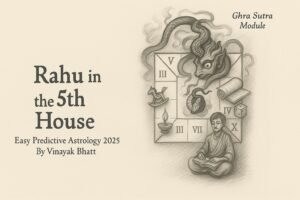
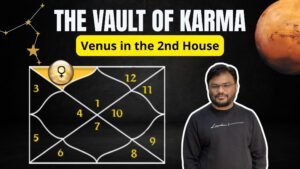
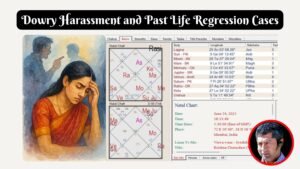
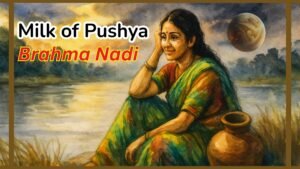

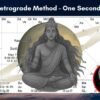
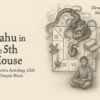

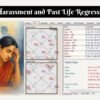
Leave a reply
You must be logged in to post a comment.